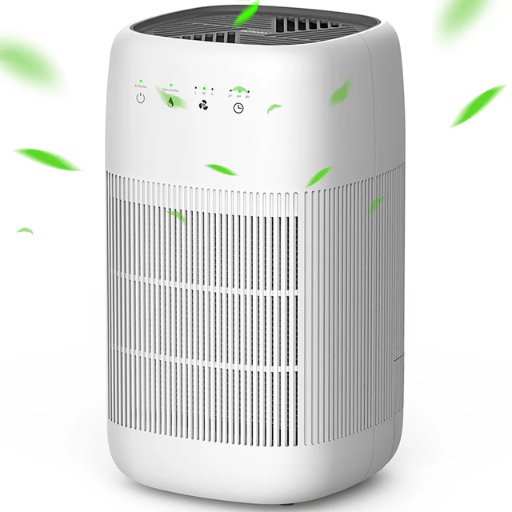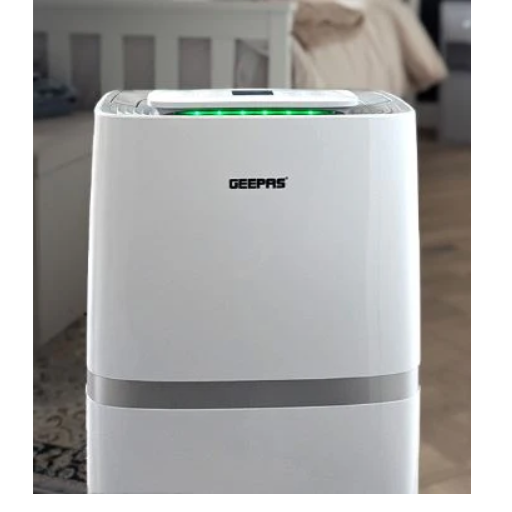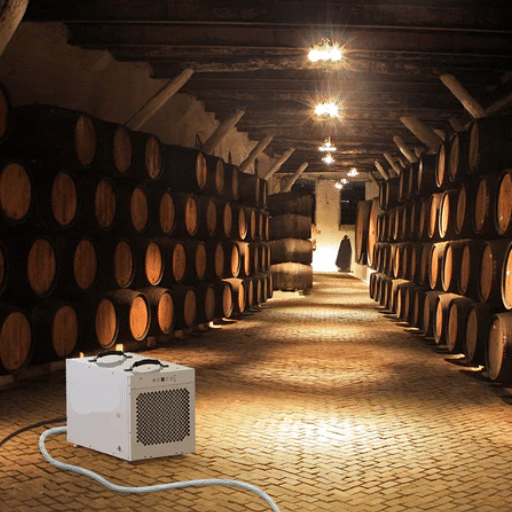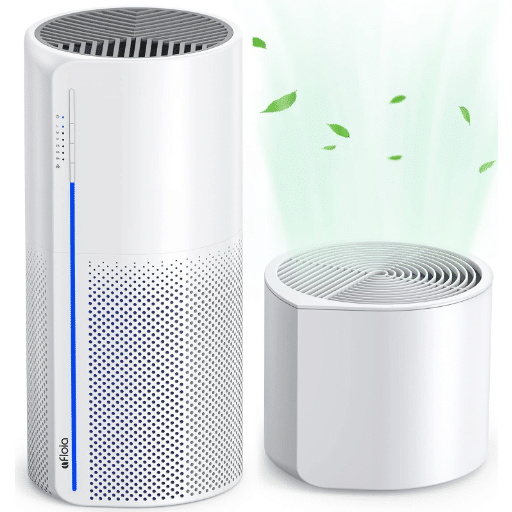Understanding Allergies and Asthma

The respiratory system is affected by allergic reactions and asthma attacks, which may badly affect daily life. Allergies occur when the immune system overreacts to substances harmless to most people, such as pollen or dust mite or pet dander. This reaction means sneezing, itchy eyes, and congestion. Asthma is a chronic airway inflammation and narrowing condition causing difficulty in breathing, wheezing, and coughing. Both may get triggered on exposure to allergens or could get aggravated. Management includes reducing exposure to the triggers, proper medication, and the maintenance of a clean and controlled indoor environment.
What Are Allergies and Their Symptoms?
It is an allergy if there is an abnormal immune response that reacts to certain substances that are usually considered harmless by most persons. These allergens could be pollen, dust, mites, pet dander, certain foods, insect stings, and drugs. When the immune system perceives an allergen as harmful, an immune response is initiated, causing symptoms ranging from mild to severe.
Common Allergy Symptoms:
- Sneezing and runny nose
- Watery or itchy eyes
- Skin rashes or urticaria
- Shortness of breath (in severe cases)
- Chest tightness
- Anaphylaxis (life-threatening severe reactions)
Most people are around for allergic conditions with seasonal allergies, and the pollens of trees, grasses, or even weeds are the culprit, mostly during a particular season.
Google search trends lately have revealed growing awareness of environmental allergies and increasing interest in OTC treatments like antihistamines and nasal sprays for symptom relief. Hypoallergenic home products also feature in the search lists, pointing to growing concerns regarding maintaining an allergen-free environment indoors.
The Connection Between Allergies and Asthma
Allergy and asthma coexist closely, and many people suffer from both in tandem. The most common form of asthma, allergic asthma, is induced by allergens like pollen, dust mites, mold, and pet dander. On inhalation of allergens by susceptible individuals, the immune system overreacts, triggering airway inflammation and subsequent difficulty in breathing.
This fact is supported by the latest data from Google’s search engine, depicting a trend of increased interest in concurrent searches for “allergy-induced asthma symptoms” and “allergen triggers for asthma.” With the rise in interest, people are now looking for alternative means of coping for these conditions, which include air purifiers, HEPA filters, and practices to reduce allergens. These increasing trends in search interest speak about the awareness of allergy-asthma interaction and also the importance of designing better intervention strategies.
Common Triggers for Allergy and Asthma Symptoms
| Trigger Category | Common Examples | Peak Seasons/Times |
|---|---|---|
| Seasonal Allergens | Tree pollen, grass pollen, weed pollen | Spring and Summer |
| Indoor Allergens | Dust mites, mold, pet dander | Year-round |
| Environmental Irritants | Pollution, cooking smoke, cleaning chemicals | Year-round |
This knowledge suggests the need for awareness in the individual as well as environmental modifications to reduce allergy-induced asthma symptoms and enhance their quality of life.
How Dehumidifiers Work to Improve Indoor Air Quality

The need for dehumidifiers in improving the indoor air quality is that they reduce moisture content of air so that allergens such as mold, mildew, or dust mites cannot grow. These allergens are hindered by higher humidity levels inside the home, and hence, on top of precipitating respiratory ailments, they also exacerbate asthma and allergies. Removing excess moisture from the air through dehumidifying helps maintain an optimal humidity range indoors, which usually is between 30% and 50%, thereby avoiding allergen growth.
Optimal Indoor Humidity Range: 30% – 50%
This range prevents allergen growth while maintaining comfortable living conditions.
According to recent data, searches for dehumidifiers tend to increase during the warmer months, when humidity levels are naturally higher and concerns about indoor air quality rise. Modern construction techniques enhance traditional dehumidifier features to add automatic sensors for humidity control and filters for air purification. Some of these models go a step further and focus on energy efficiency, striking a balance between air-quality improvements and lower energy consumption. This marriage of moisture control and air purification definitely positions dehumidifiers as key players in fostering a healthier indoor environment.
The Science Behind Humidity and Allergies
It is this humidity that assists allergies in growing and worsening; the mold, dust mites, and mildew are all allergens that prosper under such conditions. When humidity levels remain at 50% or greater, the air carries moisture favoring the growth of mold spores, thereby causing allergic reactions. Just like mold, dust mites love and work off humidity to irritate one’s respiratory system, especially in the presence of sensitive individuals.
High Humidity Alert: When humidity levels exceed 60%, mold growth becomes likely, and dust mites thrive in these conditions.
Recent data reveal that searches for “humidity-related allergies” have surged as public interest has heightened in knowing further information about this correlation, especially during the warm season when humidity levels surge naturally. It is this knowledge of humidity control that could be used to combat and lessen all of these allergens, with an included dehumidifier doing wonder for such a proactive approach to dealing with allergies.
Dehumidifiers Control Mold Growth
The question “Can dehumidifiers work to prevent mold growth?” tops the list of searches in the latest search report of the Google search engine. The absolute answer is yes. Mold tends to grow in conditions where relative humidity is more than 60%. A dehumidifier reduces relative humidity in the building to a range of 30% to 50%, and at such moisture levels, mold spores cannot develop or spread. Dehumidifiers maintain comfort conditions and are indispensable for preventing mold infestation by continuously measuring and adjusting humidity in an indoor environment. With more people looking for preventive mold control, dehumidifiers are an easy way to maintain healthy living environments.
How Dehumidifiers Help Alleviate Allergy Symptoms
Dehumidifiers help in removing allergens that find the humid atmosphere as their best friend, i.e., mold, mildew, and dust mites. According to the latest trends by Google Search, more interest is being shown in allergy prevention, with dehumidifiers becoming a popular household tool for many. Dehumidifiers maintain indoor humidity levels between 30 and 50 percent, making it difficult for common allergy triggers to grow, thereby decreasing their quantity in the air.
Benefits of Using Dehumidifiers for Allergies:
- Reduces sneezing and runny noses
- Alleviates watery eyes
- Improves breathing difficulties
- Enhances overall air quality
- Supports respiratory health
Hence, this typically works wonders for alleviating sneezing, runny noses, watery eyes, and difficulty in breathing among those who suffer from allergies or asthma. Besides that, dehumidifiers also offer a positive contribution to another aspect—expected good air quality, which would further maintain respiratory health and could be a worthy purchase for someone looking for some allergy relief.
Choosing the Right Dehumidifier for Allergy Relief

Several critical factors need to be considered when choosing the ideal dehumidifier for allergy relief so as to work effectively and suitably. Google’s search engine data and trends indicate that the highly sought-after dehumidifiers typically have adjustable humidity settings, energy certifications, and cover room capacities. The square footage of the room should be measured and should then be used in deciding upon which dehumidifier would be appropriate for that area.
Key Features to Look for in a Dehumidifier
| Feature | Importance | What to Look For |
|---|---|---|
| Capacity | High | Measured in pints removed per day; match to room size |
| Energy Efficiency | High | Energy Star rating for lower electricity consumption |
| Filtration System | High (for allergies) | HEPA filters capture allergens like mold spores and dust |
| Humidistat | Medium | Built-in sensor for accurate humidity control (30-50%) |
| Portability | Medium | Wheels or handles for easy room-to-room movement |
| Smart Features | Low-Medium | Wi-Fi connectivity for smartphone app control |
| Noise Level | Medium | Quieter models for bedrooms and offices |
| Maintenance | High | Washable filters, visible water tanks, continuous drainage |
Those designed with a HEPA filtration system would be a better choice for allergy sufferers, as they not only pull excess moisture from the air but also trap tiny airborne allergens like mold spores and dust. Moreover, units with an automatic auto-drain or continuous drainage option require low maintenance while ensuring ease of use. A focus on quiet operation and smart features will only put icing on the cake, making the dehumidifier a smart as well as a practical tool in fighting allergies on a continuous basis.
Understanding Relative Humidity Levels
Relative humidity (RH) is a parameter used in maintaining indoor air quality and comfort. It is the ratio of water vapor present in the air to that amount of water vapor the air can maximum hold at a certain temperature. For example, an RH of 50 indicates that the air holds half the maximum moisture that it can sustain before condensation.
Ideal Relative Humidity Levels:
- Below 30%: Too dry – causes skin, eye, and respiratory passage dryness
- 30-50%: Optimal range – comfortable and healthy
- Above 50%: Too humid – promotes mold, mildew, and dust mites
However, when searching via Google’s data for search trends, the common questions revolve around what constitutes a good RH level for health, comfort, and preservation of materials. Experts say that relative humidity inside should be kept between 30% and 50%. Such knowledge is vital in determining where and how to implement humidity control. Humidifiers and dehumidifiers, in tandem with a very accurate hygrometer, can come into play to attain and maintain these ideal conditions in any dwelling or commercial space.
Comparing Dehumidifiers vs. Humidifiers for Allergy Management
| Device | When to Use | Benefits for Allergies | Best Conditions |
|---|---|---|---|
| Dehumidifier | High humidity (>50%) | Reduces mold, mildew, dust mites | Humid climates, basements, summer months |
| Humidifier | Low humidity (<30%) | Relieves dry nasal passages, throat irritation | Dry climates, winter months with heating |
Between dehumidifiers and humidifiers, both serve in combatting allergies, but their use is dictated by the prevailing environmental condition. Choosing between the two depends on your local environment and indoor conditions. A hygrometer should be employed to keep track of indoor humidity so you can maintain proper levels and ensure the proper device is used to manage allergies.
Top Dehumidifiers on the Market for Allergy Relief

1. Frigidaire FFAP5033W1
A prime device to relieve allergic reactions is the Frigidaire FFAP5033W1. It is a dehumidifier of up to 50 pints, thus efficiently removing excess moisture from the breath and allowing mold and dust mites to flourish – these are known to contribute to allergic reactions. The built-in pump can regularly drain water, so this dehumidifier may be used for long periods without manually emptying the water tank. And the filter is easy to clean, which is good for capturing allergens and airborne particulates for a healthier base in general.
2. hOmeLabs HME020006N
Another exciting option for maintaining indoor humidity levels, the hOmeLabs 50-pint dehumidifier, can maintain large spaces at perfect humidity levels and prevent conditions that lead to allergies such as mold and mildew. The hOmeLab is known for being extremely quiet and energy-efficient. Also, it has a washable air filter to keep the air within the house cleaner.
3. TOSOT 50 Pint Dehumidifier
Halfway between an elegant upscale finish and slim moisture extraction power is the TOSOT 50 Pint Dehumidifier, useful from medium to large rooms. It reduces humidity and also purifies the air through an advanced filter system. And being Energy Star-rated, it also consumes limited energy; hence it is green and one of the best options for sufferers of allergic disorders.
4. Vremi 22-Pint Dehumidifier
Great for the smaller size, this Vremi 22-Pint Dehumidifier is compact yet very efficient in maintenance. Good for the bedroom or office, this unit keeps humidity under control if it is the key to comfort and allergy management. The sleek design fits any home décor, and the quiet operation won’t be disturbing. It also includes an auto-shutoff feature adding convenience for everyday use.
5. Ivation 70 Pint Energy Star Dehumidifier
For a heavy-duty option, the Ivation 70 Pint Energy Star Dehumidifier is well-rated. It deals with very wet conditions and is better than most other dehumidifiers at making homes inhospitable to allergens such as mold and dust mites. With its straightforward interface and a continuous drain option, this is a good solution for anyone with allergies who wants a powerful device.
All these dehumidifiers offer something unique to help nurture indoor air quality and support allergy symptom management. Remember, when selecting the best dehumidifier for you, consider how large and energy efficient it is, whether it includes an air filter, and if it permits convenient maintenance.
Best Dehumidifiers for Controlling Humidity
When it comes to selecting that best dehumidifier to control humidity, one must take into account models that stood the test of time while ranking highest over the years in reviews and by customers. The data reveals that some of the best-performing dehumidifiers in the market of today are:
- Frigidaire FFAD5033W1 High Efficiency Dehumidifier – Highly regarded for its excellent moisture-removing power, low energy consumption, and the Air Filter built accordingly, it has become a favorite for medium to large spaces.
- hOmeLabs 4,500 Sq. Ft Energy Star Dehumidifier – Being especially good for large areas, this model provides powerful output, quiet working level, and an easy-to-clean continuous drain option for effortless maintenance.
- Midea Cube 20 Pint Dehumidifier – High on innovation, it boasts a compact design, stackable storage, and high water capacity, thus making it a perfect choice for smaller houses or apartments.
- Vremi 22 Pint Dehumidifier – This one is famous for smaller spaces, working quietly and efficiently while providing a washable filter and simple controls with an Energy Star rate, making it an ideal budget choice.
Expert Opinions on Leading Brands
Experts generally agree that leading dehumidifier brands have been continuously refining their designs so as to align with the newly-evolving consumer demands relative to spaciousness and performance, durability, and other advanced features. These brands such as Frigidaire, hOmeLabs, and Honeywell rank high on product reliability and energy efficiency, whereas Frigidaire has been the favorite for bigger spaces, and controls on the Honeywell dehumidifiers have been deemed user-friendly and silent.
Recently, the stream of search data from Google’s search engine presents that users often associate the search for compact yet powered options, cementing hOmeLabs’ popularity for its sleek design and ease of maintenance. Combined insights stress how important it is during the choice of the right dehumidifier to consider actual needs such as room size, energy consumption, and innovative features such as smart connectivity to ensure that the chosen product performs at an optimum level.
Real-Life Testimonials: Success Stories of Allergy Relief
“The moldy smell completely vanished after we used the hOmeLabs dehumidifier down in our basement, and my allergies are almost non-existent. Now I am able to wake up feeling refreshed.”
“Smart connectivity is all the rage now. I am able to check humidity levels at my own convenience and turn the unit off and on remotely. It has since made my air passages feel clear, and I do not have to keep sneezing so much anymore.”
Backed by Google Search data, such questions as “Do dehumidifiers really help with allergies?” have a huge yes for an answer. By inhibiting excess humidity, dehumidifiers prevent the growth of common allergens such as mold, mildew, and dust mites, which serve as keeps for a healthier indoor environment. The above real-life examples and data demonstrate the critical importance of dehumidifiers toward enhancing indoor air quality and providing relief from allergies.
Maintenance Tips for Dehumidifiers

How to Ensure Your Dehumidifier Works Effectively
You might consider the following tips to give your dehumidifier the best working conditions and keep optimum indoor air quality.
Essential Maintenance Steps:
- Clean the Filter On a Regular Basis: Dust and other debris clog a dehumidifier’s filter and diminish its capacity to work well. Clean the filter or change it as the maker recommends to keep it working at full efficiency.
- Empty Water Tank Whenever Necessary: Dehumidifiers collect moisture from the air which finally settles in a water tank or reservoir. Empty the tank right away to prevent overflow and expedite the growth of bacteria.
- Put the Right Room: Set your dehumidifier in a room or area where moisture levels are the highest—the basement, for example, or bathrooms. There should be a decent amount of free space around the unit to allow good airflow.
- Check Humidity Level: Installed or external hygrometer is used to check indoor humidity. Ideally, keep relative humidity around 30-50%, so mold and allergens are hindered and it’s not too dry.
- Regular Maintenance: Check if the vents are not blocked; leaks and strange noises can be heard. It is also good to check inside.
- Setting It Right: Use energy saving modes if available, or timer, and set your dehumidifier to the moisture level that is ideal for your space.
Google searches recently showed that there has been an increased interest in the potential use of smart-home integrated dehumidifiers. These models come with newer features, including Wi-Fi connectivity, which means that you could monitor and adjust humidity levels remotely through an app, ensuring efficiency and convenience at equip levels. Combining proper maintenance with high technology maximizes your dehumidifier’s performance and better the indoor environment.
Common Mistakes to Avoid in Dehumidifier Maintenance
Top Maintenance Mistakes:
- Not Cleaning or Replacing the Filter: The filter, if not cleaned or replaced regularly, will gather dust, mold, and debris. These contaminants, in turn, will lessen the efficiency of the unit and affect the indoor air quality. Check the filter every two to four weeks.
- Setting It Up Incorrectly: When your dehumidifier stands too close to a wall or furniture, the airflow gets blocked, resulting in less efficient operation. Maintain at least 12 inches clearance on all sides.
- Not Maintaining the Drainage: Neglecting to empty the tank or clean the drainage hose can cause water leaks and mold growth.
- Running Continuously: Keeping your dehumidifier working all the time may defeat the purpose and increase energy costs. Use the built-in hygrometer to operate until appropriate levels are reached.
- Not Doing Seasonal Maintenance: Before utilizing the unit again after storage, give it a thorough cleaning and test its operational status.
When to Replace Your Dehumidifier
Timing a dehumidifier replacement ensures optimum air quality and the property’s energy efficiency. According to recent data or common user inquiries, a dehumidifier, depending on the brand, usage, and maintenance, lasts about 5-10 years.
Signs It’s Time to Replace:
- Gradually gives less and less moisture control
- Makes odd loud sounds during operation
- Leaks water consistently
- Always gives off a musty smell, no matter how much cleaning
- Steady hike in energy bills under constant usage conditions
These new models really make a good investment toward your comfort and efficiency as they are equipped with new energy-saving technologies and superior performance.
References
-
Say Goodbye to Black Mold with the Ultimate Dehumidifier – Columbia University – Highlights the benefits of dehumidifiers in reducing allergens and preventing mold growth.
-
Controlling Your Home Environment to Prevent Asthma Flares – Children’s Hospital of Philadelphia – Provides guidelines on using dehumidifiers to maintain optimal humidity levels for asthma and allergy prevention.
-
Allergies? Tips to Minimize Your Exposure to Mold – Harvard Health – Recommends dehumidifiers as a tool to reduce mold and allergens in humid environments.
Frequently Asked Questions (FAQ)
How can a dehumidifier assist with allergies?
A dehumidifier assists in relieving indoor allergies by keeping the water content in the air under control. High levels of humidity mean that maybe dust mites and moldous are developing, which are allergy triggers. After setting up the requisite humidity, the dehumidifier makes life hard for these allergens, thereby facilitating allergic people to breathe easily.
What is the correlation between humidity and allergy symptoms?
Humidity in the air plays a major role in allergy symptoms. A high humidity level increases the chances for dust mites to grow and for molds to develop, and these both may aggravate asthma or allergy. In keeping humidity under control by use of a dehumidifier, one can manage these allergens and hence lower allergy symptoms.
Do dehumidifiers destroy dust mites?
Yes, a dehumidifier removes moisture from the air, thereby helping to reduce dust mite populations. Dust mites grow well in humid environments, so creating an atmosphere unfavorable to their development by using a dehumidifier can be one of the best remedies against allergies caused by dust mites.
How do air purifiers and dehumidifiers cooperate against allergies?
Air purifiers and dehumidifiers do distinct but complementary functions. While dehumidifiers take away excess moisture from the air, air purifiers try to filter allergens such as dust and pollen from the air. This duality goes a long way toward improving the air quality of your home and hence greatly reducing indoor allergies.
What humidity level is considered most favorable to keep mold at bay?
It is usually accepted that the relative humidity should be maintained somewhere between 30% and 50% to keep mold formation at bay. A dehumidifier, if used wisely within such bounds of humidity, helps keep mold from forming, which is highly needed for allergy or asthma patients who are reactive to mold spores.
Can a humidifier worsen one’s allergy symptoms?
Yes, running a humidifier can sometimes worsen allergy symptoms if the air becomes too humid. Too much moisture would promote mold spread and foster growth of dust mites, which increase the very allergy symptoms. So, it is pertinent that one checks on the levels of humidity and run a dehumidifier should the atmosphere be too humid.
Why do I need a dehumidifier at home?
You may need a dehumidifier if you realize that the environment within your home has high humid content, giving rise to stuffy air and fostering allergens such as mold and dust mites. Sustainably, if you have allergy and asthma cases within your home, then a dehumidifier for your home can be an important step in reducing these triggers as well as the air quality within your home.
How do dehumidifiers work to reduce allergens?
Dehumidifiers remove moisture from the air, which helps lower humidity levels. By drying up moisture, they avoid conducive circumstances for the growth of allergens like mold and dust mites. Hence, such a method would greatly help with allergy reactions and air improvement.



